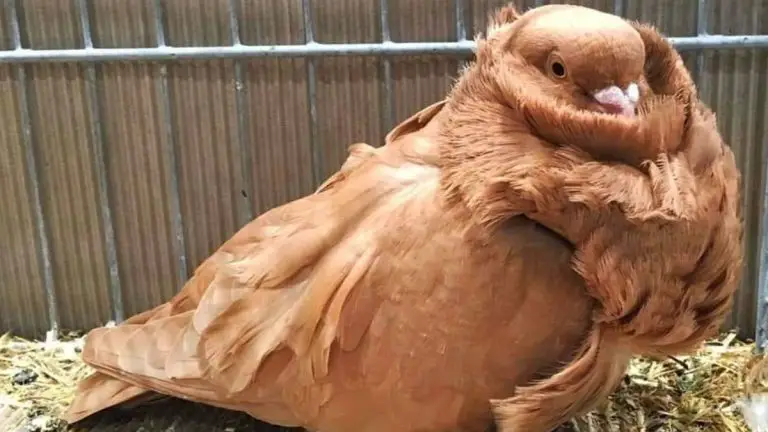Exploring the Pigeon’s Nervous System and Sensory Capabilities
Pigeons have played a significant role in human history as messengers, peace symbols, and even food sources. These intelligent birds have been taught to do things like convey messages, race, and even find explosives.
It is crucial to comprehend pigeon behavior and sensory capacities. Doing so can help with illness prevention, conservation initiatives, and human comprehension of how animals think and perceive the world.
The pigeons can survive better with our understanding of their behavior and sensory abilities. Scientists have made major strides in the understanding of birds’ cognition recently, revealing new information about these amazing creatures.
The goal of this article is to give a thorough knowledge of the pigeon’s brain, senses of sight, sound, smell, navigation, and homing. You will learn more about these intriguing birds and their extraordinary sensory talents by looking at the most recent studies in these fields. Keep reading!
The Pigeon Brain: Anatomy, Behavior, and Intelligence
Pigeons are intriguing creatures. They have extremely developed brain structure, which enables them to integrate sensory data and navigate in challenging surroundings.
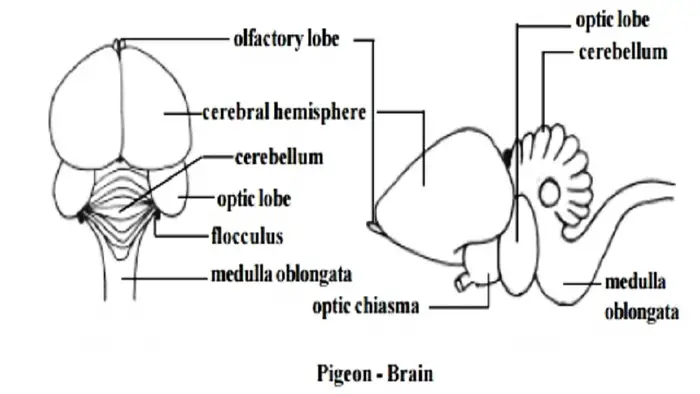
Pigeon Brain Anatomy and Behavior
The pigeon brain anatomy is divided into several separate areas, each of which performs a particular purpose.
- Cerebellum: The cerebellum, which is one of the most significant, is essential for balance and motor coordination. It gathers sensory information and enables the pigeon to quickly alter its course while flying or moving.
- Optic lobe: The optic lobe processes visual information from the eyes. With a large field of vision and the capacity to detect ultraviolet light, these birds have exceptional vision. Pigeons can use landmarks to navigate and can travel great distances in search of their home, thanks to the optic lobe.
- Hippocampus: Another crucial area of the nervous system is the hippocampus, which plays a role in spatial memory and navigation. Pigeons can orient themselves and find their way home using a mix of optical clues, magnetic fields, and smell signals, according to studies.
The Brain and Bird Intelligence
Several unexpected findings have emerged from recent studies on pigeon intelligence and the functioning of the pigeon brain. For example, they can recognize themselves in mirrors, a skill previously thought to be unique to primates.
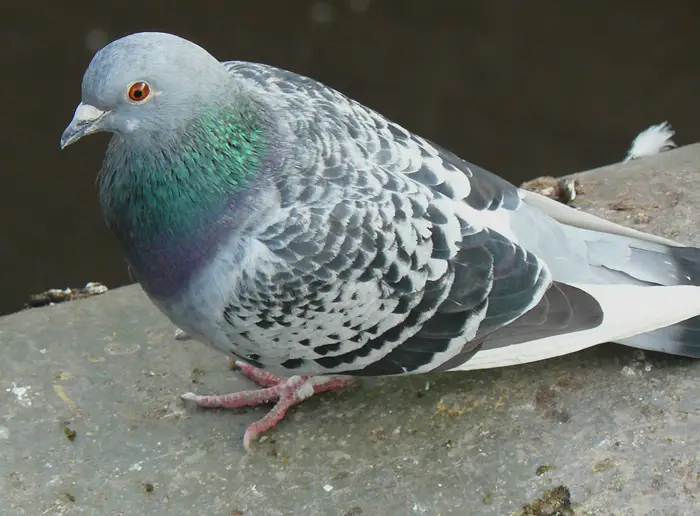
Pigeons have highly sophisticated brains that enable them to live and navigate in various situations. We can learn more about the development of bird intelligence and the neurological underpinnings of behavior by comprehending the structure and operation of the brain.
Understanding Pigeon Hearing and Vision
Because of their keen vision and hearing, pigeons have been able to live and prosper in a range of settings. We’ll now examine their eyesight and hearing and talk about the special adaptations that enable them to process sensory data.
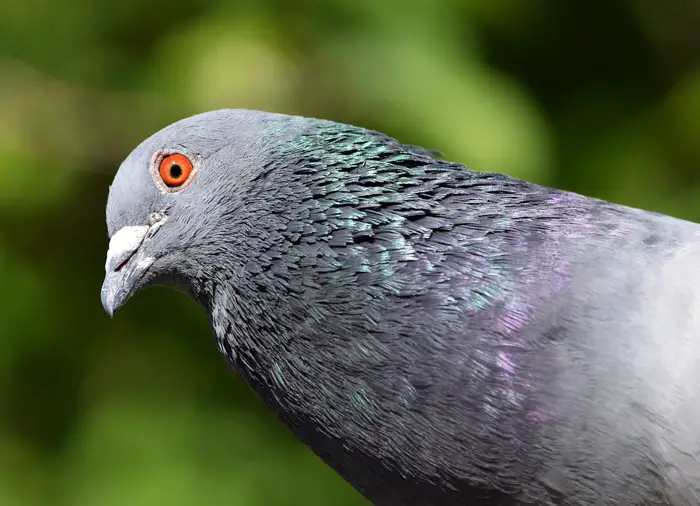
Description of Pigeon Vision
Pigeons can travel through intricate urban landscapes and locate supplies of food and water because of their exceptional vision. Pigeon vision have color vision and the ability to recognize ultraviolet light!
The birds have a unique visual system that enables them to see the world distinctively. They can look in nearly all directions without having to turn their heads because they have a panoramic field of vision. Moreover, they can sense depth and motion, which aids them in navigating their surroundings.
Review of the Pigeon Hearing
Along with amazing vision, pigeons also have great hearing. They can locate sound sources quite precisely and are sensitive to low-frequency noises. Pigeon hearing can identify the noises of potential predators or other birds in their area. Therefore this capacity is crucial.
Their inner ears have a special configuration that makes it possible for them to process low-frequency noises more efficiently than humans. Also, they have a unique hearing system with a cochlea that enables them to recognize and distinguish between various noises, like bird cries or the sound of running water.
Overview of Unique Adaptations
Pigeons’ ability to interpret visual and aural information is made possible by specific neurons and brain structures forming bird behavior. For instance, their brains have specialized neurons known as “grid cells,” which enable them to see their surroundings in a grid-like arrangement.
Moreover, the “nucleus rotundus,” a unique brain region in pigeons, facilitates better processing of auditory information. Pigeon species have a special structure that is considered to be crucial to their ability to identify sound sources.
Pigeon Sense of Smell: Role in Navigation, and Adaptations
It is widely accepted that pigeons’ exceptional sense of direction contributes to pigeon homing prowess. They also have a keen sense of smell, which is essential for both food detection and navigation.
In comparison to most other species’ senses, pigeons have an olfactory bulb that is more developed and bigger than their brain size. They can detect odors at a distance because their olfactory receptors are extremely sensitive to substances in the air.

Pigeon behaviorists are now sure that bird navigation relies heavily on olfaction. Birds locate their way home using a range of environmental signals, such as magnetic fields, recognizable landmarks, and smell cues. They are thought to utilize olfaction to identify their home region as well as to detect and follow the smell trails left by other pigeons.
Studies have demonstrated that a pigeon’s sense of smell can catch the aroma of food from distances of up to several kilometers. They can effectively interpret olfactory information thanks to a variety of special adaptations. For instance, the placement of their nasal conchae increases airflow and improves odor sensing.
Pigeon Navigation and Homing
Researchers have been captivated by pigeons’ navigational skills for decades. These have been ascribed to a number of the nervous system, including magnetoreception and landmark recognition.
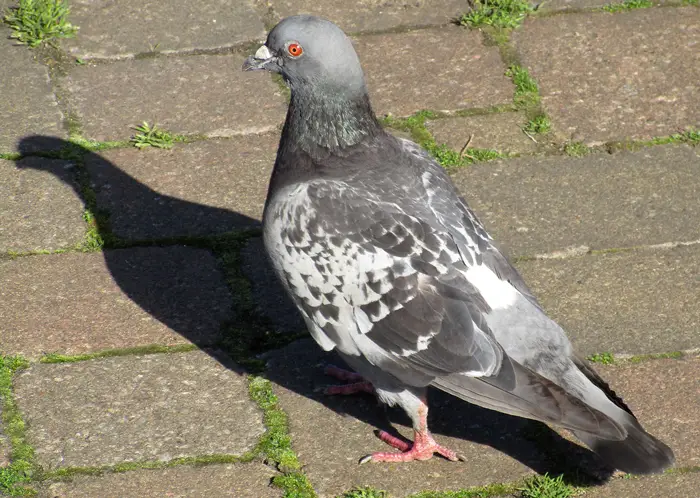
The Mechanisms of Pigeon Navigation and Homing
Pigeon navigation relies heavily on landmark recognition. According to studies, they navigate by combining smell cues with visual signals like skyscrapers and other conspicuous landmarks.
Also, they use the “map and compass” method to determine their direction and distance by utilizing their knowledge of the surrounding area and the sun’s position.
Magnetoreception is another important avian nervous system in pigeon navigation. They can detect the Earth’s magnetic field and utilize it to help them find their way.
This is thought to be due to the presence of iron-containing particles in their beaks, which act as magnetic sensors. Pigeon breeds can sense magnetic fields as faint as 0.1 microteslas. This is around 50 times weaker than the Earth’s magnetic field, according to studies.
Research on the Neural and Physiology Mechanisms
Recent research has shed light on the neural and bird physiology mechanisms of pigeon navigation experts.
Research has revealed that the hippocampus, a part of the brain associated with spatial memory, is essential for pigeon navigation.
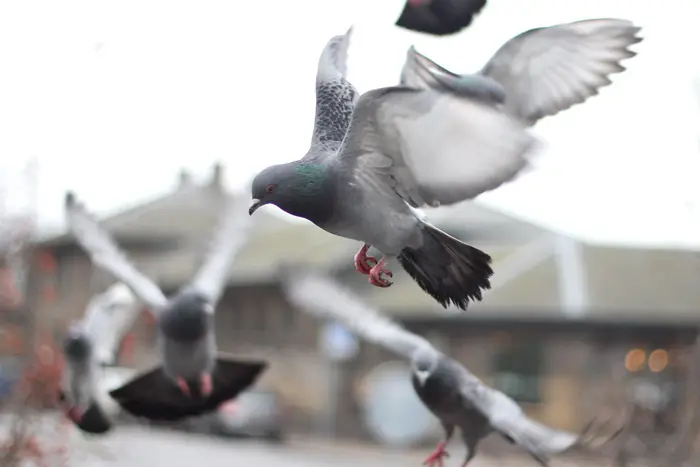
Moreover, specific neurons that react to the strength and direction of the Earth’s magnetic field have been found in the pigeon brain by pigeon researchers.
Role of Pigeon Navigation in Migration and Homing Behavior
Pigeons are well known for their ability to return to a specific location, such as their nest or roosting site. Practical uses for this behavior include the study of animal migration and the use of homing pigeons for message delivery.
Bird navigation has significance for the study of spatial memory and navigation in humans as well as the creation of autonomous navigation systems.
If you’re intrigued by the nervous system and sensory capabilities of pigeons, you might also be interested in exploring their remarkable respiratory system and unique air sacs. Our article on pigeons’ respiratory system and unique air sacs sheds light on how these adaptations contribute to their incredible flight abilities and overall health. Additionally, you can delve into the intriguing topic of how pigeons choose their mates in our article on how pigeons choose their mates, which explores the courtship behaviors and mate selection strategies employed by these fascinating birds.Conclusion
Pigeons have remarkable sensory capabilities that enable them to navigate, detect food and predators, and find their way back home. Despite having small brains, they are adept at processing environmental information.
Scientists should continue researching pigeons due to their unique homing instincts. This also includes pattern recognition abilities, and potential as model organisms in various fields. Robotics, AI, and other technology could benefit from an understanding of these systems. So, more studies may pave the way for future developments.
For those interested in learning more about pigeon behavior, bird senses, and neuroscience, numerous resources are available, including books. For example, “The Homing Instinct: Meaning and Mystery in Animal Migration” by Bernd Heinrich.
Another excellent book would be “Pigeons: The Fascinating Saga of the World’s Most Revered and Reviled Bird” by Andrew D. Blechman. Additionally, you can also look in scientific journals on pigeon behavior by avian neuroscientists. Happy reading!

